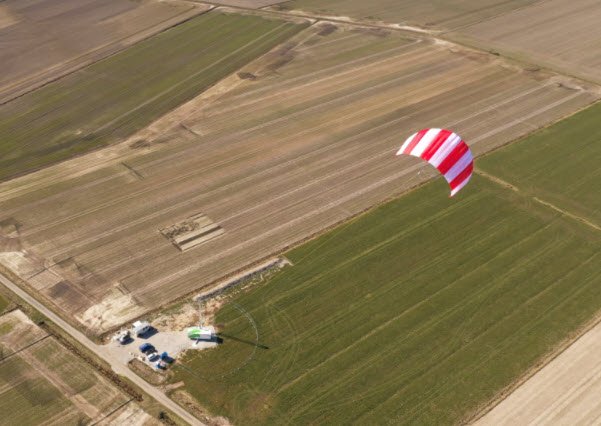A total shift to renewable energy is among humanity’s greatest challenges. In this global energy transition, wind power plays a crucial role. It is one of the most cost-efficient, abundant and environmentally friendly energy sources. But conventional wind technology is unable to exploit this resource in areas sensitive to hurricane conditions and where it is most potent: at high altitudes. The German company SkySailsPower has developed offer an airborne system that revolutionizes how the wind is harnessed and converted into electricity. They believe it is the key that will unlock 100% renewables around the clock.

A RELIABLE ALTERNATIVE TO CONVENTIONAL ENERGY PRODUCTION
Airborne wind energy systems (AWES) tap into the wind’s resources at altitudes of up to 400 meters above ground. Uninhibited by surface friction, the wind at these heights is far more reliable than wind closer to the ground. Because of this, AWES can even deliver good yields in places that are usually considered low-wind sites. For the first time, a renewable power source is a viable alternative to conventional energy production. It can even keep up with brown coal for supplying baseload power. SkySails Power’s AWES also are a reliable and economical alternative to conventional renewables such as wind turbines or solar installations and can even replace diesel generators.
Click HERE to learn how it works
RENEWABLE ENERGY THAT’S AVAILABLE EVERYWHERE
Thanks to their simple transportation and installation requirements, they claim that their power kites can be installed everywhere. Remote islands, mountainous regions, deep-sea offshore sites, and other inaccessible places are no longer without an alternative to conventional energy production. Their AWES can even be operated in hurricane and typhoon regions since they are easily retrieved and safely stowed away before a natural disaster.
THE KITE POWER CYCLE
Driven by the wind, the automatically controlled power kite rises in figures of eight. As it gains altitude, it unwinds a tether from a winch on the ground. The tractive force drives a generator inside the winch that produces electricity. This is called the “work phase”. Once the tether has reached its maximum extension, the autopilot steers the kite into a neutral position with minimal drag and lift. While consuming only a fraction of the energy generated during the work phase, the generator now acts as a motor and reels-in the tether. The system continuously repeats this process, flying the kite at an altitude of 200 to 400 meters. The concept behind the kite power cycle is called the “yo-yo principle”. Energy generated by the Airborne Wind Energy System can be fed into the grid, stored in batteries, or directly consumed. The power kite can land for maintenance or before forecasted weather extremes. Once it docks to the launch and landing mast, it is lowered to the ground, where it can be unmounted and stowed in a safe place.
 Saba News News and Information from Saba Island, Dutch Caribbean
Saba News News and Information from Saba Island, Dutch Caribbean

Why this non-sense in Saba-News?
Is harnessing an abundant ressource for cheap & clean energy not newsworthy or of interest?